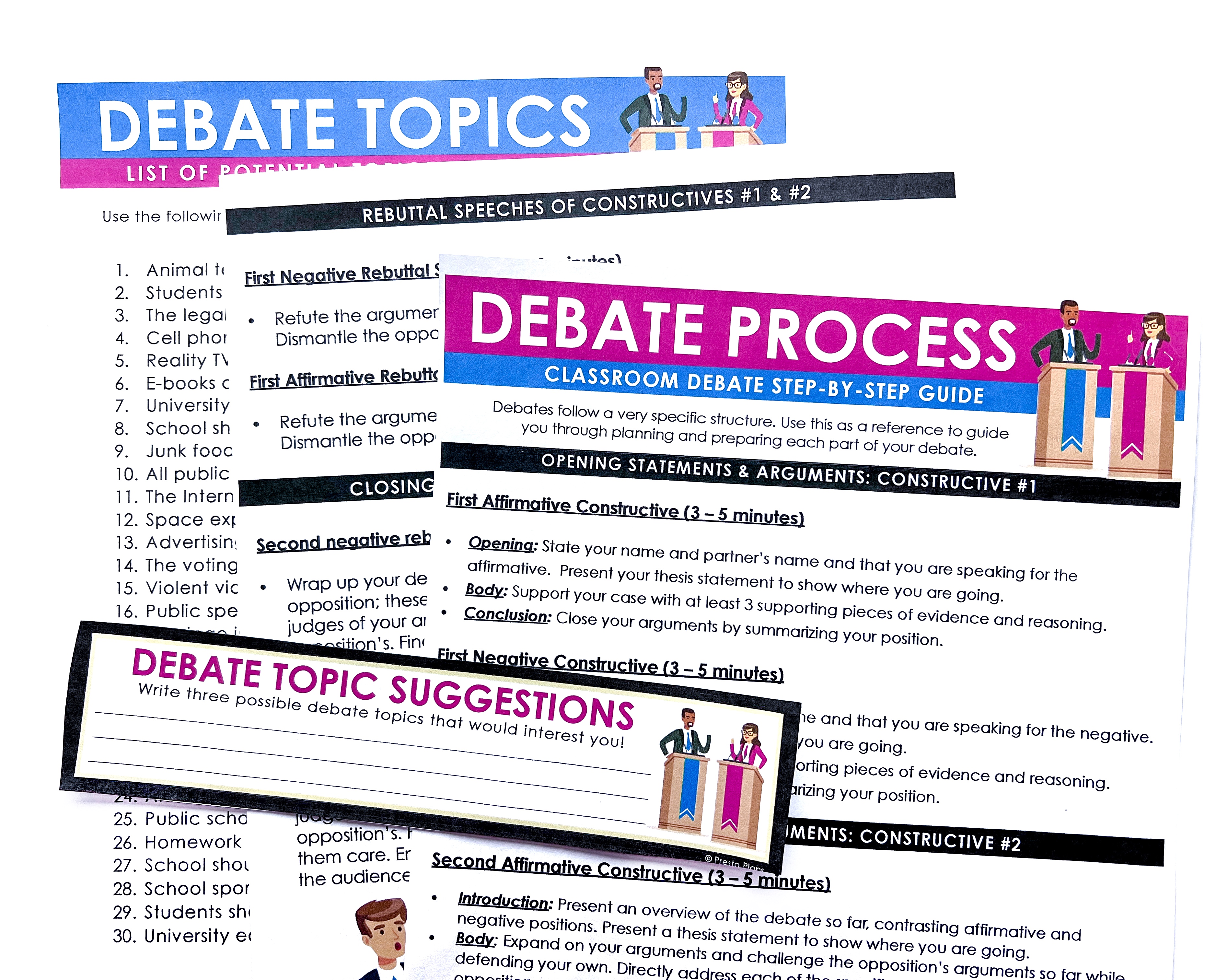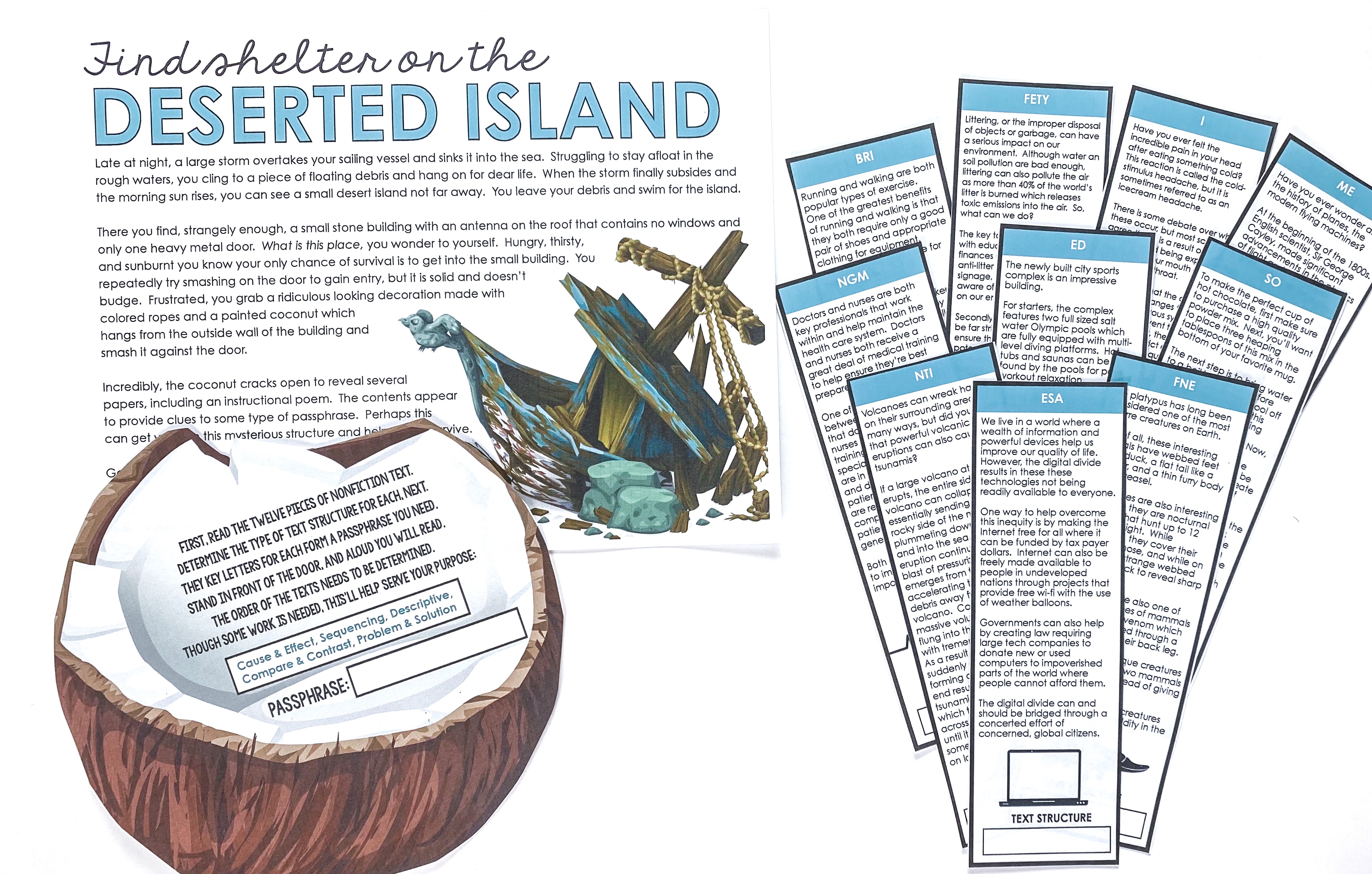Are you looking for creative ways to incorporate more nonfiction texts in middle school ELA? I find nonfiction can offer really valuable opportunities to support students with information literacy, research skills, comprehension, structuring arguments, and other essential ELA skills. One thing I especially love about nonfiction is how it can be seamlessly integrated into so many different units of study! Nonfiction texts can be paired alongside novel and film studies, explored on their own, or used as a springboard to inspire creative student projects.
Whether you’re looking for natural opportunities to incorporate more nonfiction into your existing lessons, or fresh ideas for standalone units, I have lots of ideas to help you bring more nonfiction into your classroom! Here are five creative ways to bring nonfiction into middle school ELA.
1. Nonfiction Article of the Week
Incorporating regular, structured opportunities for students to engage with nonfiction text can be a great way to help them build essential ELA skills, like reading comprehension and making connections. Once a week, I like to share a high-interest nonfiction text - such as an article or video - with ELA students. Usually, I begin by focusing the class with a series of question prompts, which they can respond to in writing or through a whole-class discussion. Next, we read the article or watch the video together. From here, the possibilities are endless!
One week, reading an engaging newspaper article could spark a lively classroom debate. Another week, students might view a nonfiction video before making a text-to-self connection in a written response. By the end of the school year, students will have had 40 weeks of exposure to various nonfiction texts, and plenty of practice responding to articles and videos in a variety of different ways.
If you’d like to try out a nonfiction article and activity in your middle school ELA classroom, check out this free resource about the history of hot dog eating contests!

2. Infuse Nonfiction into Book Clubs
Another way to infuse nonfiction into middle school ELA is by pairing historical information, primary sources, or even news articles with a related novel study. There are several different ways to approach this type of blended learning, depending on the needs of your particular class.
Connecting students with opportunities to carry out meaningful, relevant research related to their reading is one way to bring nonfiction into your existing literacy program. If you are doing a whole-class novel study of The Giver by Lois Lowry, for example, you might want to have your students carry out some research about the mathematical, scientific, or philosophical concepts explored in the novel while they are reading. Working in groups, students could explore a variety of different concepts through their research, and then share their findings with their classmates.
If students in your class read at a variety of different levels, you might also want to consider running “book clubs” in small groups. In this case, you may select a variety of books for your students that center around a similar topic or theme. For example, you may structure your book clubs around broad concepts like “survival” or “dystopian societies,” or you could instead focus on novels that are all set in similar time periods. Taking this approach, students reading either Number the Stars by Lois Lowry or Refugee by Alan Gratz could collaborate on a historical research project about WWII or the Holocaust to complement their fiction reading.
3. Debates on Current Issues
If you’re looking for a collaborative way to incorporate nonfiction into your middle school ELA class, why not try a debate on a current event or research-based issue? Debates are a great way for students to flex their critical thinking muscles, practice working in teams toward a common goal, and learn how to effectively craft an argument.
If I’m running a formal debate unit, I like to use classroom debates as a springboard for teaching effective research practices. This includes evaluating credible sources and ensuring arguments are supported with valid evidence and examples. However, if you want all the fun of a debate unit without the time commitment, you can also incorporate impromptu debates into your morning routine!
For this approach, I like to begin by getting students to take an “agree” or “disagree” position on a statement (like “a hot dog is a sandwich”). From here, you could give the “agree” and “disagree” sides ten minutes to craft their arguments, based on quick nonfiction reading or research. After the brief debate is over, your class can evaluate the data presented by each side and declare a winner!
4. TED Talks or Podcasts
TED Talks and podcasts are two really useful tools in any ELA teacher’s toolkit. Both can be really effective ways of exploring learning outcomes related to speaking and listening. They also offer alternative ways for middle schoolers to experience nonfiction texts beyond traditional reading.
If you’re wondering where to start, I recommend curating a list of links to student-friendly videos or podcasts that you can share with your class throughout the year. Once every week or two, I like to make time to view a TED talk, listen to a podcast, or engage with other nonfiction media. Once the class has finished the video, students can then respond to a related writing prompt writing prompt. You might like to have each student keep a video journal and check it periodically to assess ELA skills, including comprehension, as well as use evidence from the text to support ideas and opinions.
To extend your students’ understanding of nonfiction media, you might even create an opportunity for them to create their own videos to entertain, inspire, and educate an audience! This can be a great way for students to practice working together, learn how to write a script, and build their confidence in public speaking.

5. Text Structures Challenges
When students understand some of the common structures used by authors to organize nonfiction writing, it can help them focus on important ideas and anticipate what is to come. I like to begin by sharing some of the most common types of nonfiction text structures, including:
- Cause and Effect
- Problem and Solution
- Compare and Contrast
- Sequence
- Description
Once students have a solid understanding of the basic features of each text structure, it’s time for them to apply their skills! I love reading challenges because they encourage students to put their new learning into practice in a collaborative, engaging (and maybe even a little bit competitive!) way. In the Deserted Island Reading Mystery, students must correctly identify various informational text structures to reveal a secret passphrase!
I hope these ideas give you some fresh ways to incorporate nonfiction into your middle school ELA class!
Need other ideas for bringing nonfiction into middle school ELA? Check out some of the other Coffee Shop Blogger ideas below:

.png)



















